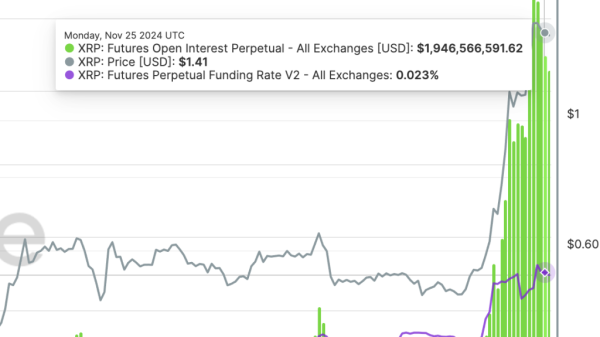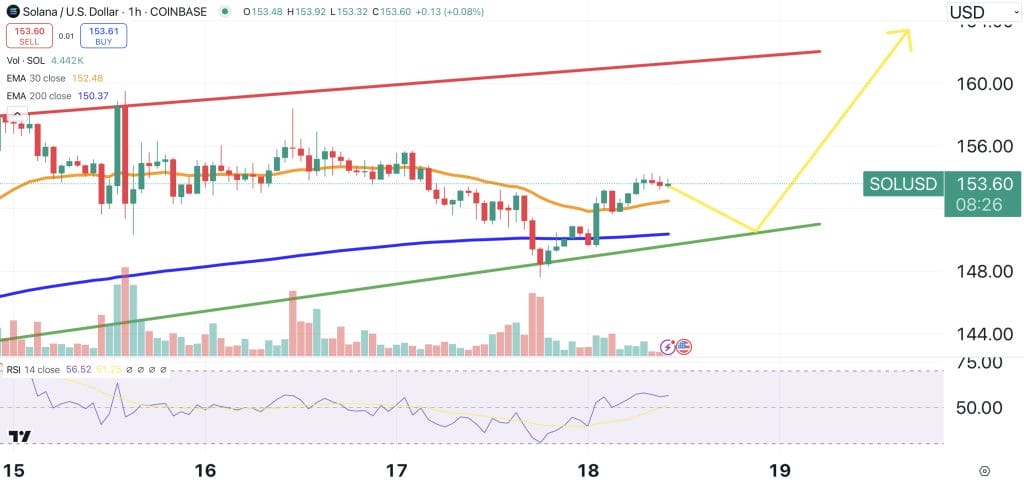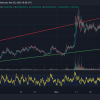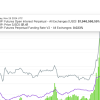As cryptocurrency and blockchain technologies continue their rapid and disruptive growth in the global financial market, Solana (SOL) has emerged as a strong contender in the league of blockchains. With its unprecedented blockchain capabilities, it seems on track to achieve a value of $500 soon.
This rise can be attributed to Solana’s sizzling infrastructure that authorizes an overwhelming 65,000 transactions per second. This seven-second block time coupled with a $0.00001 per transaction validation fee makes it unique and potentially scalable beyond the current market leader, Ethereum.
One of the significant indicators of this accelerated ascent is the dramatic increase in Solana’s volumes. A closer look reveals that SOL’s trading volume has skyrocketed to an overwhelming $2.5 billion. This dramatic surge clearly surpasses other contemporaries in the blockchain universe, lending weight to Solana’s inherent potential for rapid growth and wider acceptance.
A comparison between Solana and Ethereum further emphasizes Solana’s exponential rise. While Ethereum’s gas fees and scalability problems continue to be a significant concern, Solana emerges as a reliable and fast alternative. Ethereum’s relatively slower transaction speed stands at 15-20 transactions per second, a far cry from Solana’s 65,000 transactions. While the Ether’s transaction fee hovers around $20, Solana ensures the same at a fraction of cost, charging only $0.00001 per transaction – a differential that proves advantageous for SOL.
Moreover, increasing institutional interest in Solana strengthens the prediction about its rising value. The backing of heavyweights like MultiCoin Capital, Sino Global Capital, and the popular exchange FTX paints a positive picture for its future. Similarly, innovative and influential DeFi and NFT (Non-fungible tokens) projects, which have been utilizing Solana’s blockchain, are also signaling a bullish trend.
Nevertheless, potential challenges within this realm should also not be ignored. Solana is still relatively new, and its technology is not as time-tested as Ethereum. While Solana’s technology appears to be ground-breaking, there may still be some early-stage bugs and vulnerabilities that could diminish its potential growth.
While the world anticipates Ethereum 2.0, which promises higher scalability and efficiency, it remains to be seen whether it will slow down Solana’s valiant path to $500. Moreover, as Solana’s transaction speed and cost benefits are not solely unique – Binance Smart Chain and Cardano offer similar perks – it also raises the question of whether Solana will continue to retain its edge over its competitors.
In conclusion, the latest stats and trends definitely favor Solana’s path to a potential $500, given its superior blockchain capabilities, increasing institutional interest, and favourable comparison with Ethereum. However, its sustainability in the fiercely competitive and rapidly innovating crypto space depends on how well it can manage potential early-stage technology issues and how robustly it can position itself against other similar chains. The crypto world will be closely watching Solana as it continues on its potentially game-changing trajectory.






























